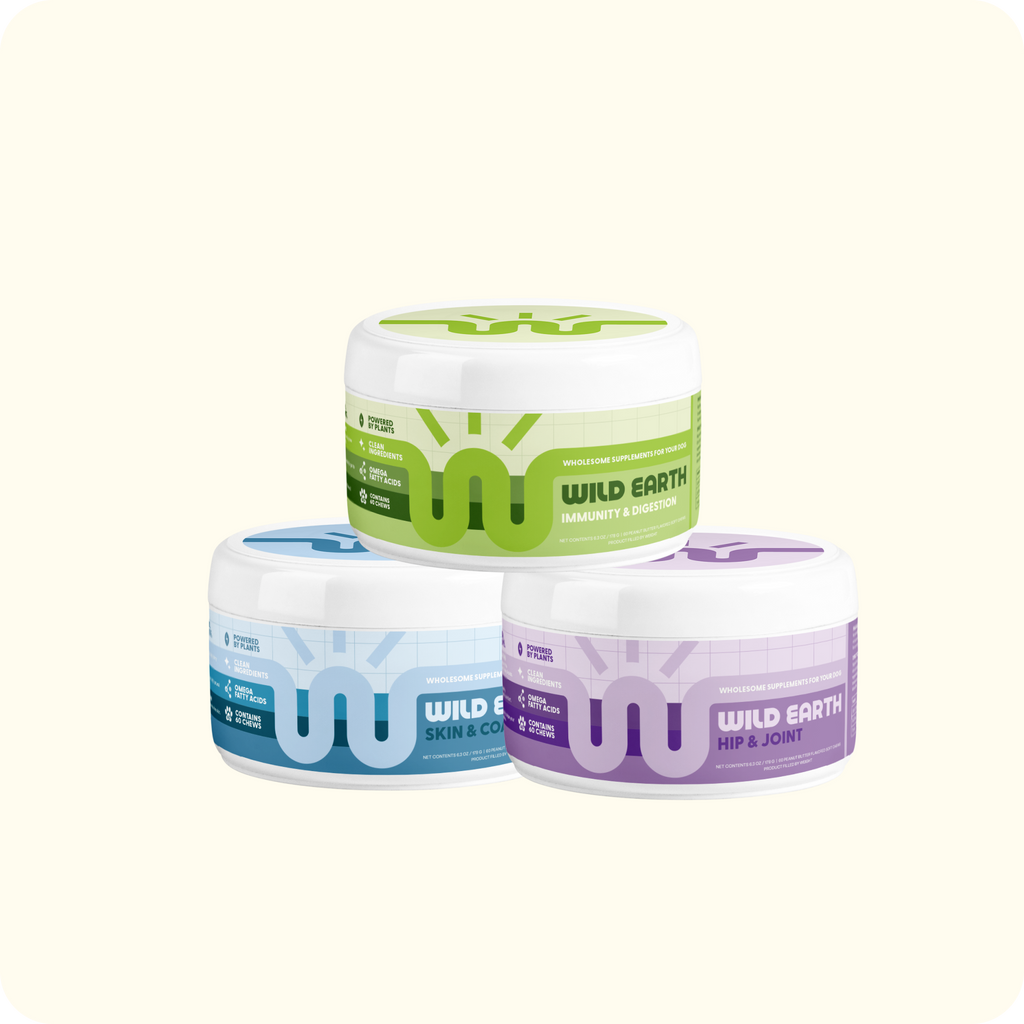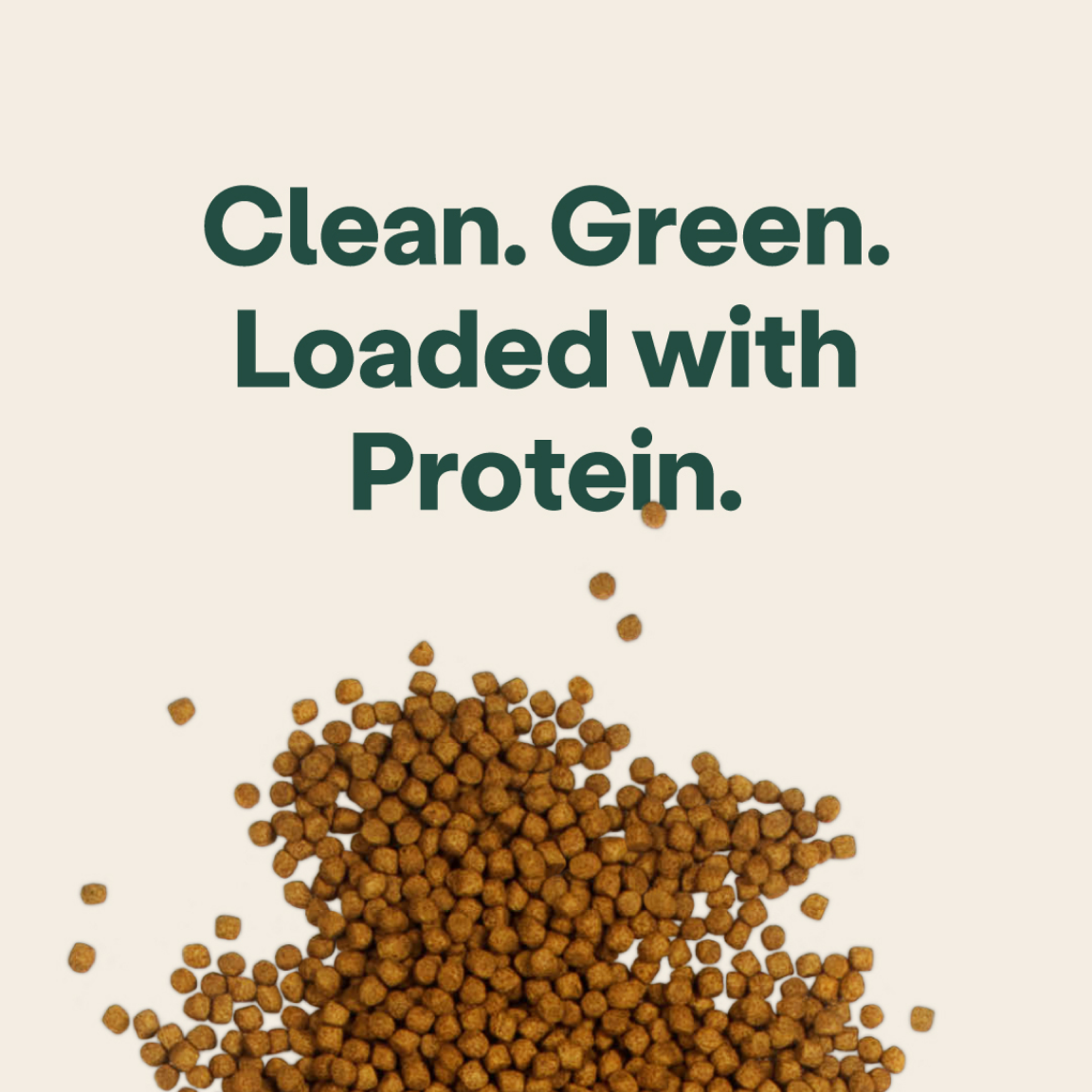
Extrusion in Pet Food
Key Takeaways
-
Extrusion is a high-heat cooking process used in 95% of dry pet foods, improving digestibility, safety, and shelf life.
-
Pros: Enhances starch and protein digestibility, inactivates harmful enzymes, and ensures shelf stability.
-
Cons: May reduce protein quality (via the Maillard reaction) and cause vitamin loss (but this is corrected with premixes).
-
Plant-based proteins withstand extrusion better than animal proteins, preserving nutritional quality.
-
Wild Earth guarantees optimal nutrient levels (like lysine & methionine) through rigorous testing to ensure AAFCO compliance.
Do you know what cereal and kibble have in common? They are both made using a process called extrusion which involves high heat.
Over the past several months I have witnessed a surge in articles on the dangers of extrusion, many claiming that the high heat removes nutrients and processing poses a threat to our pet’s health.
In this blog, I will explore the process of extrusion and its impact on the nutritional quality of dry pet foods.
What is Extrusion?
Extrusion is a cooking process used in the manufacturing of about 95% of dry pet foods. It is used to improve safety, shelf life, nutritional characteristics, texture, and nutrient digestion.
During the process of extrusion, wet and dry ingredients are mixed together to form a dough. The dough is then cooked under high pressure and high temperature and pushed through a die that shapes and cooks the food, which is subsequently knife-cut and dried. Before bagging, the kibble is sprayed with a mixture of fats, vitamins, and minerals. Since this process utilizes high heat, it has both positive as well as negative effects on the nutritional quality of the kibble.
The Pros and Cons of Extrusion
Much like everything else, extrusion has both desirable and undesirable effects. On the plus side, the extrusion process improves overall digestibility of nutrients such as starch and protein. It also allows for the production of pet food that is shelf-stable which offers convenience to pet parents. As for the negatives, extrusion reduces protein quality of animal-based proteins and leads to vitamin loss (which can be corrected). Let’s take a look at each nutrient and how it is affected by extrusion.
Effects on Starch
Dog and cat foods may contain up to 50% starch. What exactly happens to starch during the extrusion process? Well, it becomes gelatinized, which generally makes it more digestible– meaning its nutritional components can be more easily absorbed by the body.
As for the more undesirable effects of extrusion on starches, extrusion may enhance the formation of complexes of starch with fat and proteins. Complex formation may inhibit digestion of these nutrients.
Effects on Fats (Lipids)
Regardless of the source – plant or animal – fats are greatly affected by lipid oxidation, which is a challenge for preservation. The rate of lipid oxidation is affected by many factors, but extrusion inactivates lipase and lipoxidase present in foods which results in a decrease of fatty acid oxidation during storage.
Similarly to starches, extrusion can increase the formation of lipid-protein or lipid-starch complexes. Unlike lipid-starch complexes, however, it appears that lipid-protein complexes are readily digested.
Effects on Protein
The effects of extrusion on the protein component of the food is perhaps the most discussed, and therefore more time will be spent on protein. Whether animal or plant-based, extrusion generally increases protein digestibility. How? Well, heat denatures protein, which means it disrupts the bonds between the peptides and alters the protein, which can make it more susceptible to digestive enzymes and therefore improve the digestibility of these proteins. The high heat used during extrusion also works to inactivate protein-based nutritionally active factors that impede nutrient digestion or utilization. It can also serve to inactivate enzymes which can cause deterioration during storage.
For several plant-based protein sources, such as soy, extrusion not only increases the protein digestibility but also increases the availability of certain amino acids known as limiting amino acids. Limiting amino acids are those that are typically provided in the lowest amount in dog food, therefore providing the limitation on protein synthesis.These are typically methionine and lysine– both of which we include in our guaranteed analysis.
Moving on to the more undesirable effects of extrusion on protein. The main mechanism involved in protein quality reduction is the Maillard reaction. The Maillard reaction is a complex chemical reaction between amino acids (specifically lysine) and reducing sugars that occurs during the extrusion process. This reaction is responsible for the browning of the extruded pet food and contributes to the development of desirable flavors and aromas. Maillard reaction products (MRPs), however, are unable to be utilized by the body and therefore the Maillard reaction reduces the bioavailability of lysine. In order to account for this possible loss, we have included lysine in the guaranteed analysis of our products, meaning that we guarantee that level of lysine present in our food via testing. This ensures that the Maillard reaction enhances flavors and aromas, but does not lead to inadequate lysine levels in our food.
Lastly, heterocyclic amines (HCAs) are a group of compounds that can form when amino acids and creatine (present in muscle meat) react at high temperatures, such as those reached during extrusion. The formation of HCAs in pet food is a concern because some HCAs have been associated with cancer in research animals when consumed in high concentrations (Sugimura et al., 2004). Rest assured, this only occurs when meat is used and the same is not true for plant-based diets.
Overall, unlike animal proteins, plant proteins generally withstand the high temperatures of extrusion better. This means that pet foods relying on plant-based protein sources are less likely to experience the same degree of denaturation, preserving the nutritional integrity of the ingredients.
Effects on Vitamins and Minerals
Vitamins, in particular, are very sensitive to heat, light, oxygen, moisture and mineral content. As such, vitamin loss is a serious issue in the pet food industry as deficiencies can cause severe illnesses or even death. Being that commercial diets are often the main source of nutrients for pets it is important to ensure that vitamin content of a food is adequate.
The high temperature and high shear conditions of the extrusion process can affect vitamin retention– especially for vitamins B, A and E. This, however, has been thoroughly studied and, as a result, an estimation of the required vitamin overdose prior to extrusion has been determined.
What does this mean exactly? While many of the ingredients used to prepare commercially available dog foods contain vitamins and minerals, supplemental vitamins and minerals are usually added to the food as “premixes.” Premixes help ensure that the correct levels of the micronutrients are evenly distributed in the finished product.
Most commercial pet food companies enrich dry pet foods with vitamins and minerals in larger amounts taking degradation during extrusion and storage into account. At Wild Earth, we test our finished product to ensure optimal vitamin and mineral content– this means you can rest easy knowing the levels in our food are within the recommended ranges in order to avoid under or overdosing.
Other Effects of Extrusion
During extrusion, inactivation of nutritionally active factors occurs. Nutritionally active factors are those which impede nutrient digestion or utilization. This is beneficial as it further improves digestibility of the extruded product.
“Compared with traditional processing methods, extrusion showed the largest effect in reducing levels of several enzyme inhibitors and lectins, with a concomitant improvement in in vitro starch and protein digestibility (Quang et al., 2008).”
Wild Earth’s Commitment to Pet Health
High-heat extrusion has revolutionized the pet food industry, providing a convenient and nutritious option for pet owners. While there are potential drawbacks, particularly for meat-containing products, the overall impact can be mitigated by selecting high-quality plant-based ingredients and carefully formulating pet food recipes.
At Wild Earth, we expertly select our ingredients, making sure each has a purpose. As mentioned, we always test our finished product to ensure we are meeting AAFCO recommendations, and guarantee levels of the lysine as well as methionine, which are both limiting amino acids.
References
Markowics Bastos M., Monaro E., Siguemoto E., Sefora M. Maillard Reaction Products in Processed Food: Pros and Cons. February 2012. Food Industrial Processes - Methods and Equipment. DOI:10.5772/31925
Oba PM., Hwisa N, Huang X, Cadwallader KR. Swanson KS. Nutrient and Maillard reaction product concentrations of commercially available pet foods and treats. September 2022. Journal of Animal Science 100, 1–10. DOI: 10.1093/jas/skac305.
Quang DT, Hendricks WH, van der Poel AFB. Effects of extrusion processing on nutrients in dry pet food. July 2008. Journal of the Science of Food and Agriculture 88(9):1487-1493. DOI:10.1002/jsfa.3247
Singh S, Gamlath S., Wakeling L. Nutritional aspects of Food extrusion: A review. August 2007. International Journal of Food Science & Technology 42(8):916 - 929. DOI:10.1111/j.1365-2621.2006.01309.









































